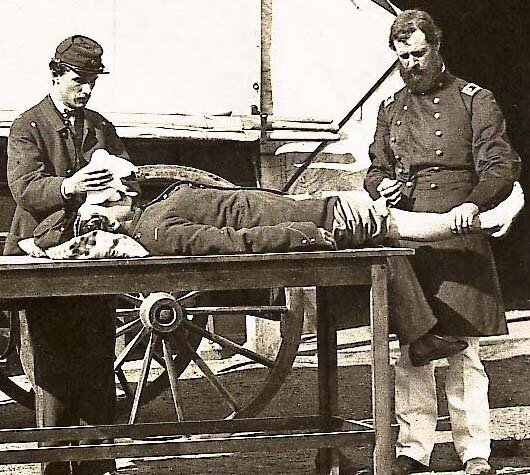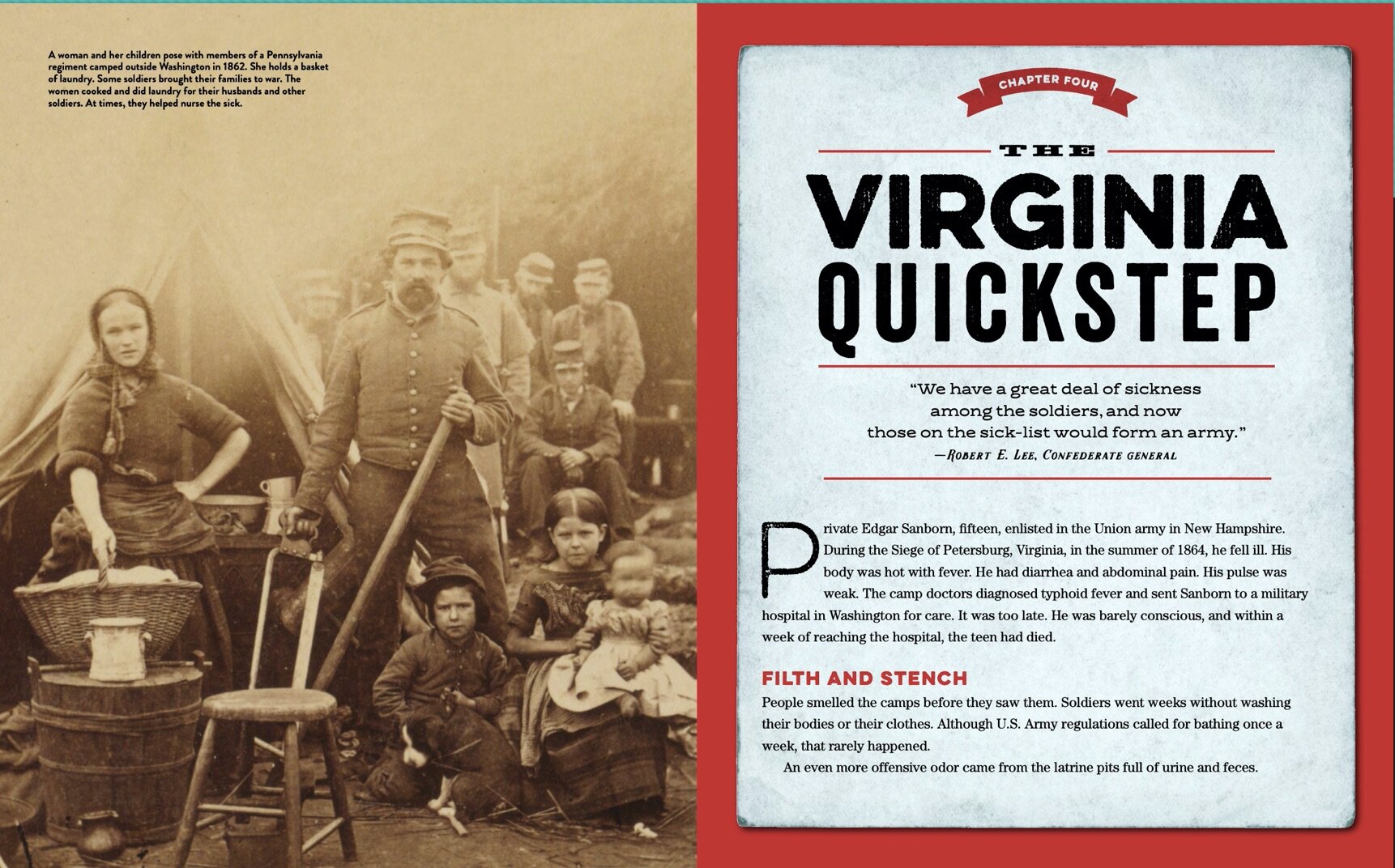BLOOD AND GERMS:
THE CIVIL WAR BATTLE AGAINST WOUNDS AND DISEASE
civil war medicine: THE FIRST BOOK IN THE
MEDICAL FIASCOES SERIES
TEACHER GUIDES
Discussion Guide with Common Core State Standard Correlations: Discussion Guide pdf
Discussion questions and research. Curriculum connections. Extra Credit content extensions.
Watch Gail’s interview with the National Museum of Civil War Medicine about the research and writing of BLOOD AND GERMS. CLICK HERE.
From the National Museum of Civil War Medicine: civilwarmed.org/lessonplans
Lesson plans, worksheets, activities, primary source materials, & videos for grades 4-8. Topics include hospitals, surgeons, amputation, nutrition, ambulances, and more.
BLOOD AND GERMS CAN BE USED IN Science, health, and history curricula
As a history, the book explores the Civil War, including causes, select battles, and the participants (soldiers, doctors, nurses, and volunteers from the aid societies). Personal stories are included, based on primary source research using military records, the U.S. census, and written accounts by eyewitnesses. A timeline and glossy enrich the reading experience
As a STEM book, BLOOD AND GERMS explains the causes of the diseases that afflicted soldiers, discussing bacteria and viruses. It describes wound infections and the ways these were treated in the age before germ theory was understood. Anesthesia and amputation methods are covered, and the myths about both procedures are debunked.
The practice of medicine during the Civil War led to advances in healthcare that we still enjoy today: effective hospital nursing; establishment of an ambulance system to rescue the injured; a triage method of prioritizing emergency care based on an assessment of injuries; better designs of prosthetic limbs .
VISUAL MATERIALS
Archival photographs of soldiers, doctors, nurses, volunteers, military camps, disease symptoms, injuries, hospitals, surgical techniques and equipment.
Surgical instruments used in amputations. To save lives, doctors performed more than 60,000 amputations during the War.
MORE TO EXPLORE
National Museum of Civil War Medicine, Frederick, Maryland
civilwarmed.org
The museum offers exhibits about Civil War surgical care, medicines, doctors, nurses, soldiers’ camp life, and more. The website provides many additional resources, such as podcasts, videos, digital exhibits, lectures, blog articles, photographs of artifacts, and other information about medicine during the Civil War.
American Battlefield Trust
battlefields.org/learn
Watch videos and read articles about various Civil War topics, including battles, amputations, casualties, biographies, and the role of women.
National Museum of Health and Medicine on Flickr, “Images related to the Civil War in the National Museum of Health and Medicine”
flickr.com/photos/medicalmuseum/albums/72157614294677868
Check out more than 300 medical photographs of wounded Civil War soldiers, surgical instruments, and hospitals.
PBS, The Civil War
PBS.org/kenburns/civil-war
Discover more about the Civil War in the PBS documentary film. The website includes videos, photographs, biographies of key figures, classroom activities, and links to more resources.
PBS, Mercy Street
PBS.org/mercy-street/home
Watch the PBS drama about a Union hospital in Alexandria, Virginia. The program accurately shows the many aspects of Civil War medical care. The website contains additional information in blog posts, short videos, and educator materials. Read more about surgery, disease, nursing, and hospitals.
Smithsonian Institution. Civil War 360.
smithsonianchannel.com/shows/civil-war-360
Watch short videos about the Civil War, featuring untold tales and items preserved at the Smithsonian Institution.



